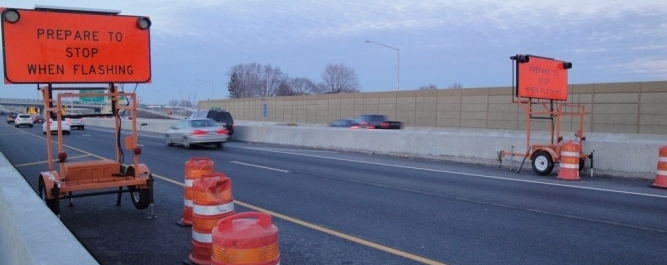Workplace safety is an ongoing concern for every industry, especially within the transportation sector. Road workers and travelers face safety challenges when lanes are blocked or made narrow. To curb the frustration of being caught in traffic because of these construction projects, the industry is deploying technology for intelligent work zones. The goal is to prevent crashes and help ease some of the frustration.
Forward-thinking transportation agencies see the value of these systems to not only reduce crashes, but to also reduce traffic delays and costs associated with construction projects. Traveling through and around these work zones are proven to be more efficient and safer.
How Does This Technology Improve Safety?
Also known as Intelligent Transportation Systems, this technology uses communications equipment, computers and other electronics for collecting information. The information gathered is processed to take appropriate action steps. The action steps help to improve the safety and mobility of work zones.
Generally, the systems are divided into three main categories for work zones:
- Outside
- Approaching
- Inside
Areas outside the actual construction zone includes planning and designing and pre-trip information for travelers. Approaching the work zone relates to systems that are deployed away from the work zone to prepare travelers for what’s ahead. Finally, inside the work zone systems includes applications in the immediate vicinity of work crews.
Factors to Consider Before Deploying an ITS
There are a number of things to consider before one or more ITS systems for use in a work zone. Those in the transportation industry must determine whether the selected system provides real-time information. Working with old data – even 10 minutes old in most cases – may not provide accurate information. This leads into the next important factor.
How credible or reliable is the information gathered from the selected system?
Sometimes the credibility of data used in planning work zone safety depends on whether the system is fully automated or controlled manually. Typically, an automated system uses software logic when making decisions about planning.In most cases, it might work best to have the system linked to a statewide ITS system instead of a local one. Transportation agencies will get a broader understanding of traffic flows over and an expanded area.While using an ITS application in every work zone might not be the best approach, many situations are appropriate. Effective use depends on enough data collection that quantifies the benefits. However, qualitative benefits are apparent to most transportation agencies.
- BPI to hold Cybersecurity Conference to ‘Fortify Cyber-Resilience in an AI World’ - July 25, 2024
- New Smishing Campaign makes use of Globe SMS Sender ID - May 27, 2024
- PH releases first Super App ‘eGov PH’ - June 3, 2023

